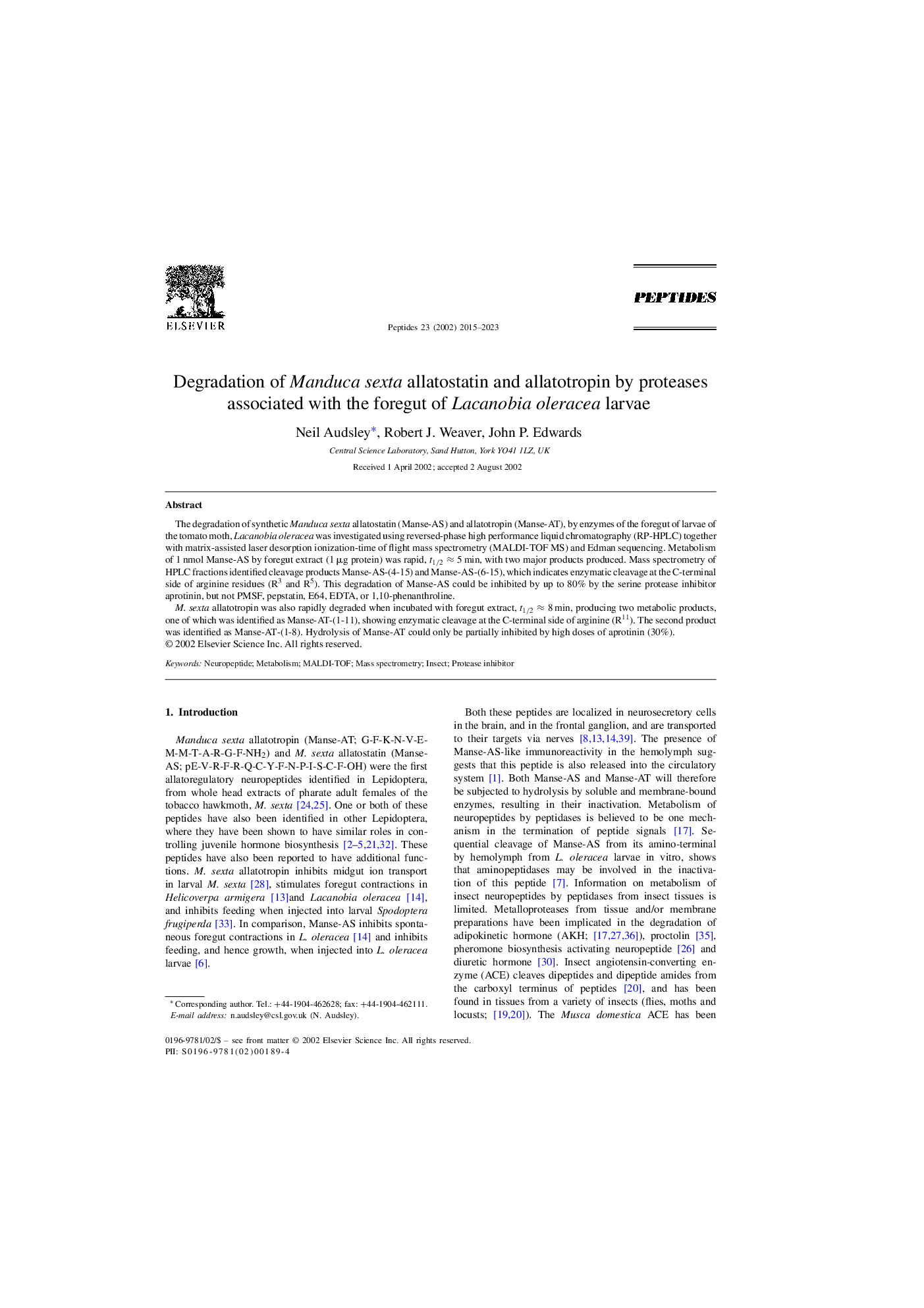| Article ID | Journal | Published Year | Pages | File Type |
|---|---|---|---|---|
| 2008665 | Peptides | 2015 | 9 Pages |
The degradation of synthetic Manduca sexta allatostatin (Manse-AS) and allatotropin (Manse-AT), by enzymes of the foregut of larvae of the tomato moth, Lacanobia oleracea was investigated using reversed-phase high performance liquid chromatography (RP-HPLC) together with matrix-assisted laser desorption ionization-time of flight mass spectrometry (MALDI-TOF MS) and Edman sequencing. Metabolism of 1 nmol Manse-AS by foregut extract (1 μg protein) was rapid, t1/2≈5 min, with two major products produced. Mass spectrometry of HPLC fractions identified cleavage products Manse-AS-(4-15) and Manse-AS-(6-15), which indicates enzymatic cleavage at the C-terminal side of arginine residues (R3 and R5). This degradation of Manse-AS could be inhibited by up to 80% by the serine protease inhibitor aprotinin, but not PMSF, pepstatin, E64, EDTA, or 1,10-phenanthroline.M. sexta allatotropin was also rapidly degraded when incubated with foregut extract, t1/2≈8 min, producing two metabolic products, one of which was identified as Manse-AT-(1-11), showing enzymatic cleavage at the C-terminal side of arginine (R11). The second product was identified as Manse-AT-(1-8). Hydrolysis of Manse-AT could only be partially inhibited by high doses of aprotinin (30%).
